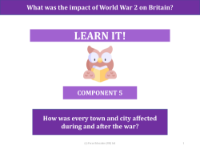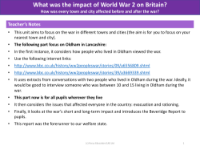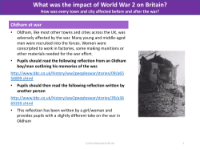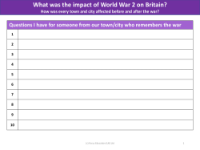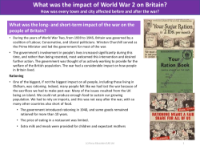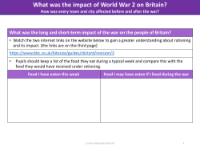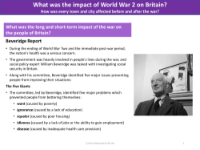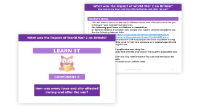Evacuation of people - Info pack
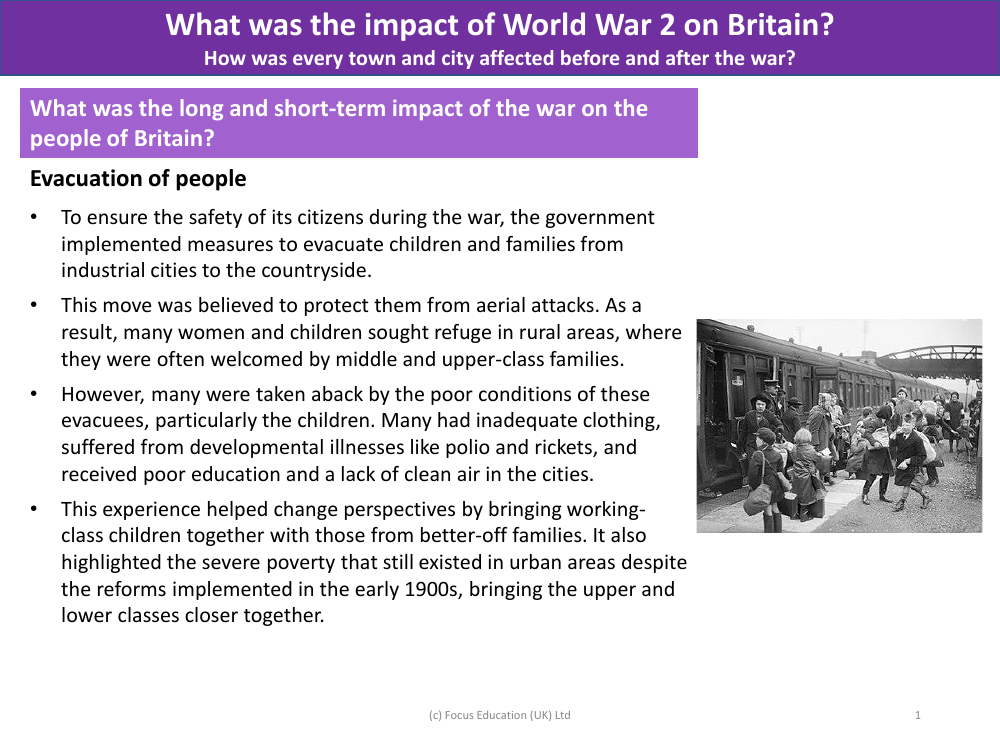
History Resource Description
The war had profound long and short-term impacts on the people of Britain, one of the most significant being the evacuation of civilians. To safeguard citizens from the anticipated aerial bombardments, the government orchestrated the mass relocation of children and families from urban industrial areas to the relative safety of the countryside. This exodus primarily involved women and children, who were often taken into the homes of middle and upper-class families in rural locations. The intention was to shield them from the dangers of war, but the evacuation also exposed the stark disparities in living conditions between different social classes.
Many evacuees, particularly children, arrived in the countryside with inadequate clothing and were afflicted by illnesses such as polio and rickets, conditions exacerbated by the poor quality of life in the cities. In addition to health issues, these children often had limited educational opportunities and had been deprived of clean air. The integration of working-class evacuees with more affluent families helped to break down class barriers and brought to light the extent of urban poverty, despite previous attempts at social reform. Educational resources, including firsthand accounts from former evacuees and interviews with host families, provide valuable insights into the experiences of those affected and the social changes that ensued as a result of the war and the evacuation process.
